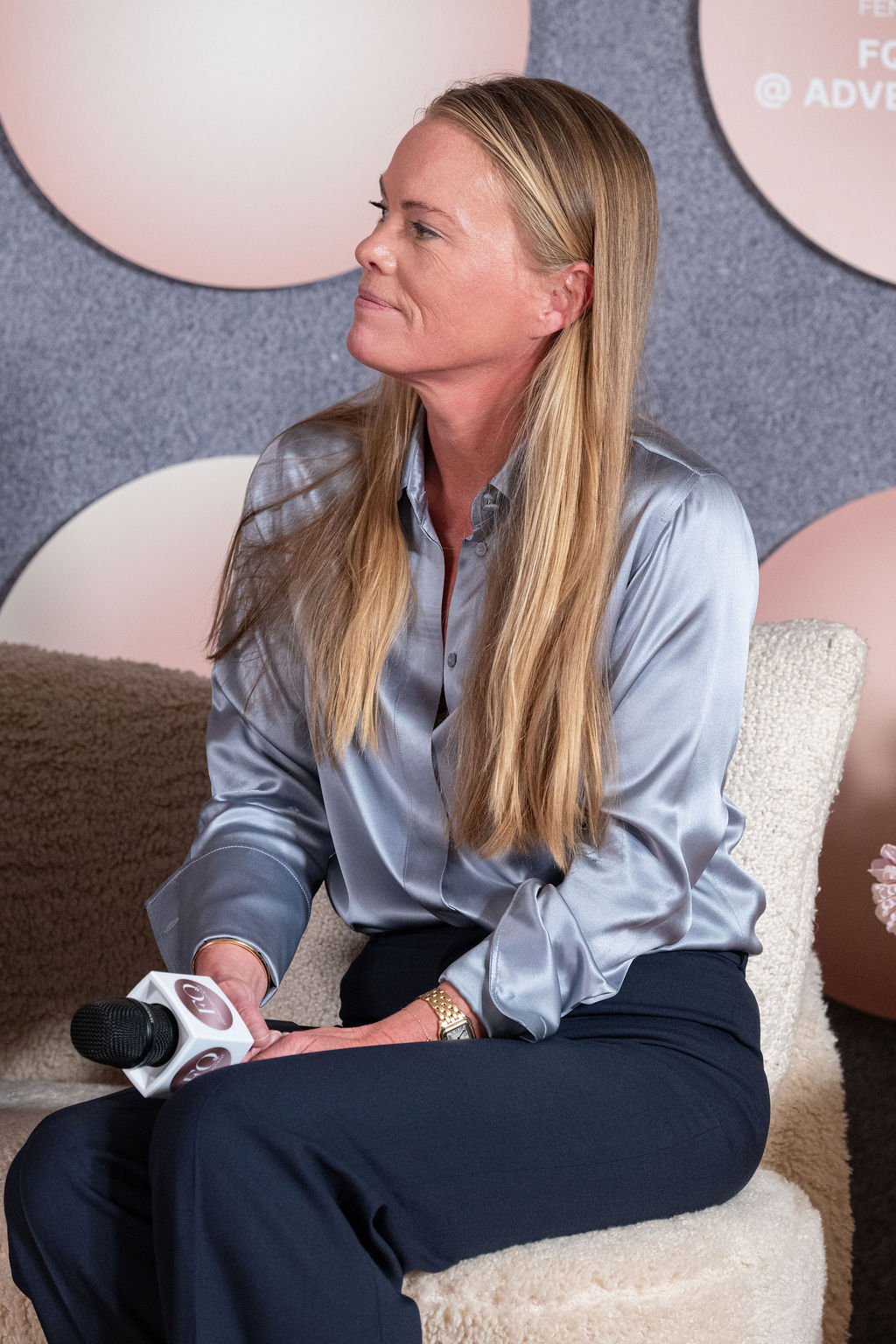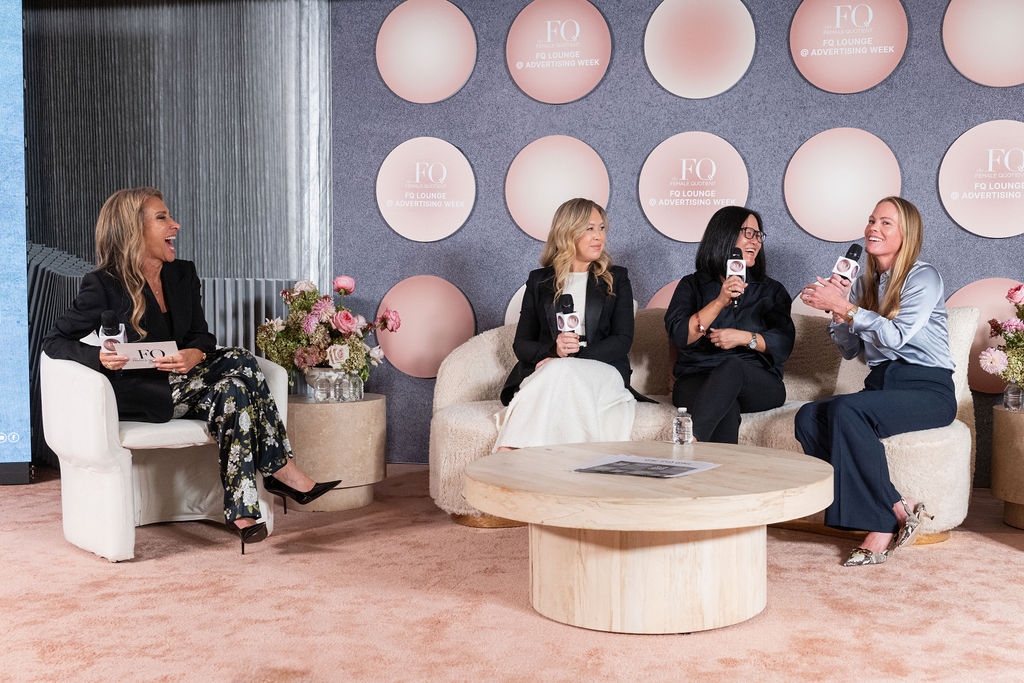This is part three in a four-part series capturing Rokt’s conversations at the FQ LOUNGE™ during Advertising Week.
Leadership has always been about alignment. But in a business landscape defined by hybrid work, AI disruption, and generational shifts in values, that alignment is harder, and more urgent, than ever.
In the panel Partnership at the Top: Aligning C-Suite Vision With Action, Shelley Zalis, CEO of The Female Quotient, led a candid conversation with Elizabeth Buchanan, Chief Commercial Officer at Rokt, Brieane Olson, CEO of Pacsun, and Tracy Kim, CEO of Dig Inn.
What followed wasn’t a list of leadership best practices. It was a conversation about values in tension, the weight of visibility, and the daily work of showing up, ready to listen, shift, and lead with clarity.
Communication is essential, but alignment is earned

For Elizabeth Buchanan, alignment begins with clarity, both in the message and the method. Recalling a recent moment of misalignment with a partner, she said, “I immediately just got on the phone.” Direct conversation, she added, is only one part of the equation. “Two things for me are always incredibly important to alignment… communication and documentation.”
To reinforce this, she shared how her team at Rokt uses shared Google Docs to create visibility and invite feedback. “Asking constant questions like, ‘Are you clear? Are we on the same literal page?’ is what creates alignment.”
Tracy Kim built on that theme, describing the disconnect that can happen between corporate and field teams in her restaurant business. “The way that our field restaurant team works is so radically different from how our corporate team works,” she said. “One is based on hierarchy. The other is flat.” Alignment, in her view, depends on a shared value system. “An enforcement of absolute adherence to a shared value of assuming good intent” is what allows for honest disagreement and eventual consensus.
Purpose and values are not the same thing
When asked whether “purpose” and “values” are interchangeable, the panelists were quick to disagree.
“To me the purpose is why we exist as a company, and the value is how we actually get it done,” said Kim. Buchanan made a similar distinction. “At Rokt, we’ve had the same three company values for five or six years. They are threaded through everything.”
One of those values, “smart with humility,” shows up everywhere, from job requirements to hiring processes. “We don’t have a requirement for an undergraduate degree, for example, because we believe you can be smart in ways that maybe are even more humble.”
Brieane Olson reflected on how Pacsun’s purpose has evolved over the years. “Even if we reflect back five years ago… our true purpose was to curate the best apparel and footwear. That shift in purpose has fundamentally shifted the alignment at the top.”
For her Gen Z and Gen Alpha customer base, she said, authenticity is everything. “Authenticity is core in terms of the way that they feel about a brand, and which brands they show up for and support.”
Empathy, disagreement, and the value of tension
As the conversation moved into leadership dynamics, each panelist offered a different lens on how to manage disagreement at the top.
For Buchanan, empathy is the foundation. “Understanding where the other member of the team is coming from… what their key priorities are… and what is in conflict with what we’re trying to achieve together.”
Kim took it further. “We have a value in our company, which is no assholes, and we really hold true to it.” Her rule for team communication is simple and direct. “If you have an opinion, now is the time to talk about it. Silence is agreement.”
Olson emphasized the importance of encouraging healthy tension. “It takes being very vulnerable to be willing to speak up and say you disagree,” she said. “And trying to seek out the quieter voices in the room is a really important balance.” Her leadership team recently completed the Enneagram personality assessment to better understand how their individual styles shape collaboration.
“We did an analysis to understand how our team naturally shows up,” she said. “When you reach a point of conflict, knowing which other person to pull into the conversation to round out the view is powerful.”
Rethinking hiring in a time of acceleration
The session closed with a discussion on hiring, specifically, how C-suite leaders are thinking differently about recruitment in the age of AI and shifting talent expectations.
Buchanan explained how Rokt recently hired nearly 150 people in three months, most of them entry-level. “We believe they’re going to be more native with AI than those of us who haven’t grown up with it,” she said. Her team uses AI-enabled tools to test for values alignment throughout the process.
“One of the ones that mattered most when we looked back over 13 years was smart with humility,” she noted. “You can have an incredibly high IQ and skill, but if you can’t collaborate, it’s not going to work.”
Kim added that Dig Inn is also experimenting with AI in hiring, particularly in their restaurant teams. But she stressed that values remain non-negotiable. “We interview very rigorously on our values because that fundamentally is what actually makes a person successful in our organization.”
Olson brought the conversation full circle with a reminder about keeping hiring grounded in simplicity. Recalling advice from a former Trader Joe’s executive, she said, “At Trader Joe’s, we hired people who wanted to have fun and be helpful.”
That guidance still sticks with her. “You really have to find the simplicity of what you’re looking for.”
What’s next in the series
Stay tuned as Rokt continues its week at the FQ LOUNGE™ during Advertising Week. In our next recap, we’ll dive into how AI is shaping the future of work.




.jpg)

%20(1).png)
.jpg)
.jpeg)
.jpg)